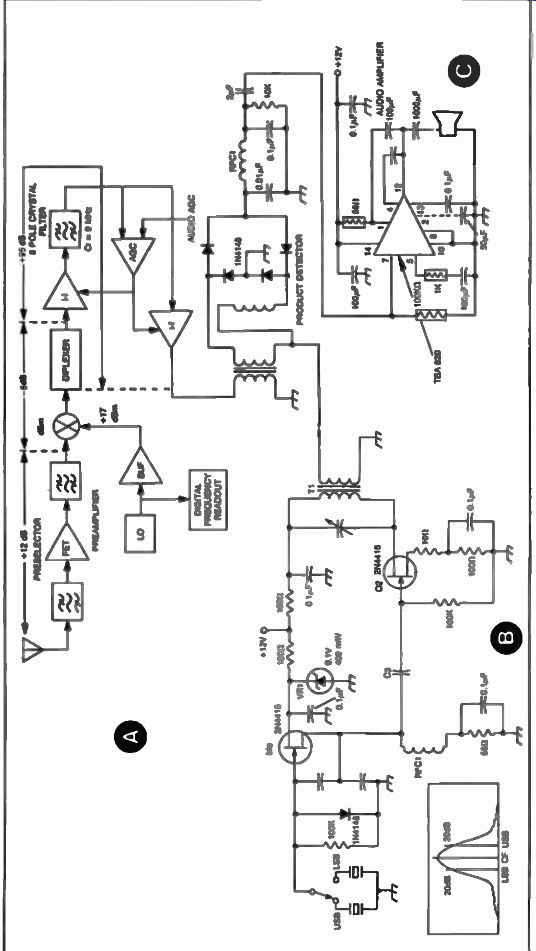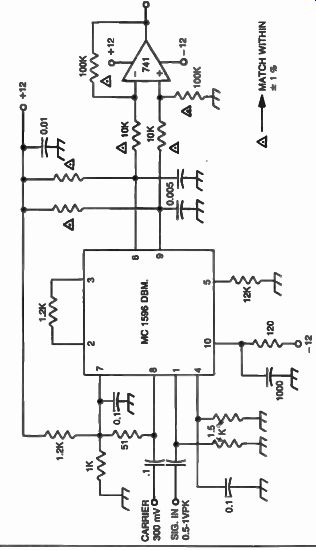The last stage of a communications receiver contains one or more detectors, a beat frequency oscillator, and an audio amplifier. While other types of detectors have been discussed earlier in this guide, the product detector is used in processing single-sideband, continuous wave or frequency shift keying signals. A product detector is actually a mixer which is used in conjunction with the beat frequency-oscillator in order to inject the missing carrier to an SSB signal, or to produce an audible tone when a cw or an FSK signal is received.
Product detectors can take many forms. Figure 1 shows a circuit implementation for a diode mixer approach using 1N4148 silicon diodes as applied to the 9 MHz i-f receiver. A low-pass filter is used at the output of the detector in order to reject high-order products generated by the mixer.
Shown at B is a circuit implementation for a bfo which can switch between two crystals allowing for upper and lower sideband reception.
Other types of product detectors are also used in communications receivers. Figure 2 shows an active product detector which allows for very low intermodulation distortion when using the Motorola MC-1596.
These products are typically 60 dB with this approach, a remarkable performance for this active doubly-balanced mixer.

Fig. 1. Product detector, beat frequency oscillator, and audio amplifier
implementations.

Fig. 2.